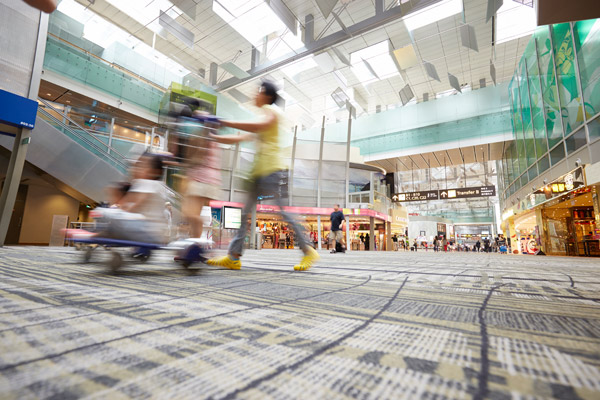
The new Automated Trolley Management System (ATMS) at Changi Airport will ensure trolleys are readily available at the right place and at the right time.
Changi Airport’s latest innovation, the new Automated Trolley Management System (ATMS), is set to raise airport productivity while enhancing passenger experience.
In the past, there was a fixed number of trolleys at each bay throughout the day and trolley retrievers had to patrol the terminals 24/7 to ensure the bays were fully stocked. This led to an uneven distribution of trolleys, with some bays being underutilised and others experiencing a shortage. But with the introduction of the ATMS, such issues have become moot.
With ATMS, ground handling personnel can now simply turn to their iPads for real-time information on where trolleys are needed most. Each iPad is connected to the airport’s flight data system so ground supervisors are able to anticipate how many trolleys are needed based on incoming flights and deploy their staff accordingly. The ATMS also tracks the trolley supply through a camera at each bay so ground handlers know exactly how many trolleys are available at any given time. Furthermore, alerts are issued an hour before flights land so staff have plenty of time to replenish the bays if necessary.
Since the implementation of the ATMS, which was rolled out progressively throughout all three terminals last year, Changi Airport has reported a 25 per cent reduction in terms of manhours. The number of trolley bays has also been increased from 50 to 70, providing more convenience for passengers, and without the need for extra manpower.
With automation, Changi is able to ensure trolleys are readily available for passengers at the right place and at the right time, and to do so in the most efficient way, said Mr Albert Lim, Changi Airport Group’s Vice-President (Passenger Experience). “With growing flight numbers and a manpower crunch, automation is the way forward so that service standards do not slip,” he added.